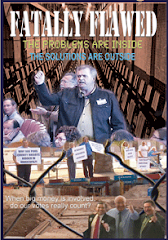Education Week Blog
December 8, 2009 8:41 AM
Dear Deborah,
We promised to keep a close watch on what is happening at the federal level, and now it begins to get interesting. And a bit scary, if you care about the future of public education.
The U.S. Department of Education announced its plan to spend at least $3.5 billion to push local officials around the country to close failing schools and reopen them with new teachers and principals.
At this time of fiscal crisis and budget cuts, districts are desperate for federal dollars. To qualify for these dollars, districts must do one of four things: 1) fire the principal and at least half the staff and reopen the school with new staff; 2) turn the school over to a charter operator or other private managers; 3) close the school and send the students to higher-achieving schools in the district; or 4) replace only the principal and take other steps to change the school.
 Sounds just like the sanctions in NCLB. The Obama-Duncan plan might as well be called "NCLB 2.0."
Sounds just like the sanctions in NCLB. The Obama-Duncan plan might as well be called "NCLB 2.0."Arne Duncan is certainly familiar with school turnarounds. He closed down a number of schools in Chicago. Studies done by Chicago think tanks have shown that most of the brand-new, turned-around schools enrolled few of the students who previously attended "failing" schools. The Consortium on Chicago School Research produced a report revealing what happened to students when their "failing" school was closed: 80 percent of the students enrolled in low-performing schools transferred to other low-performing schools. There is no evidence that the turnaround strategy in Chicago has produced positive results. Catalyst, the first-rate independent group that covers education issues in Chicago, reported in September that high school test scores in Chicago were stagnant, even in the highly-touted transformation schools.
Charter school organizers and management companies must be licking their chops, waiting to scoop up the new federal dollars and new opportunities for market expansion. The charter movement began as an effort to strengthen public education, but it has turned into a movement to get rid of public sector unions and to turn public schools into private schools funded by public dollars. And here is the rest of it.
Continue reading here.
















